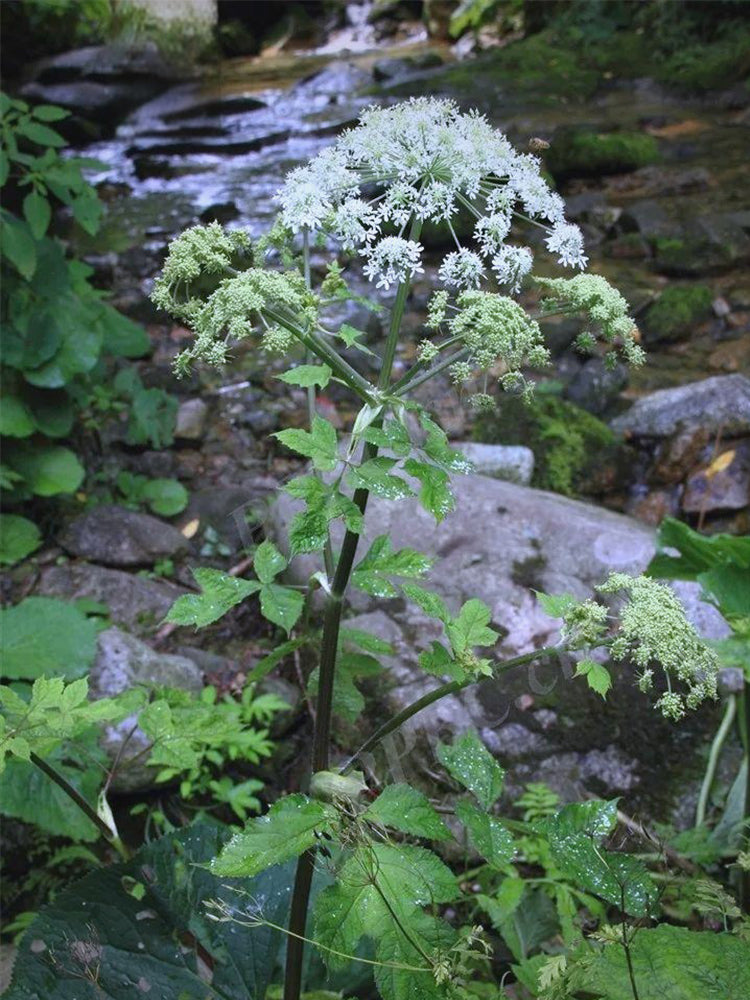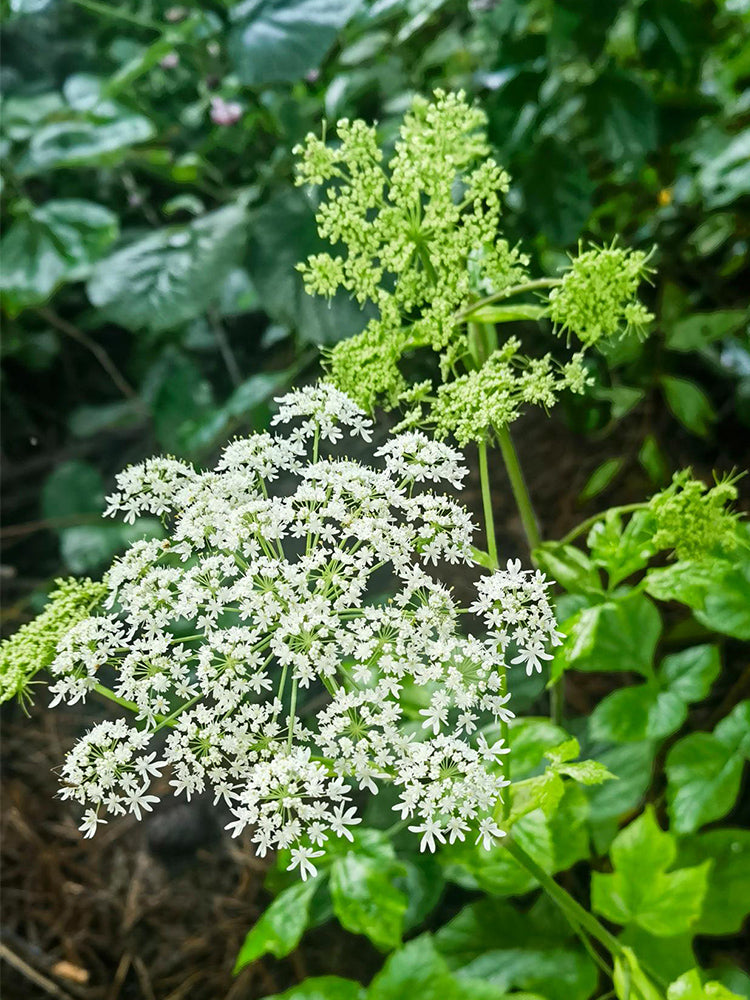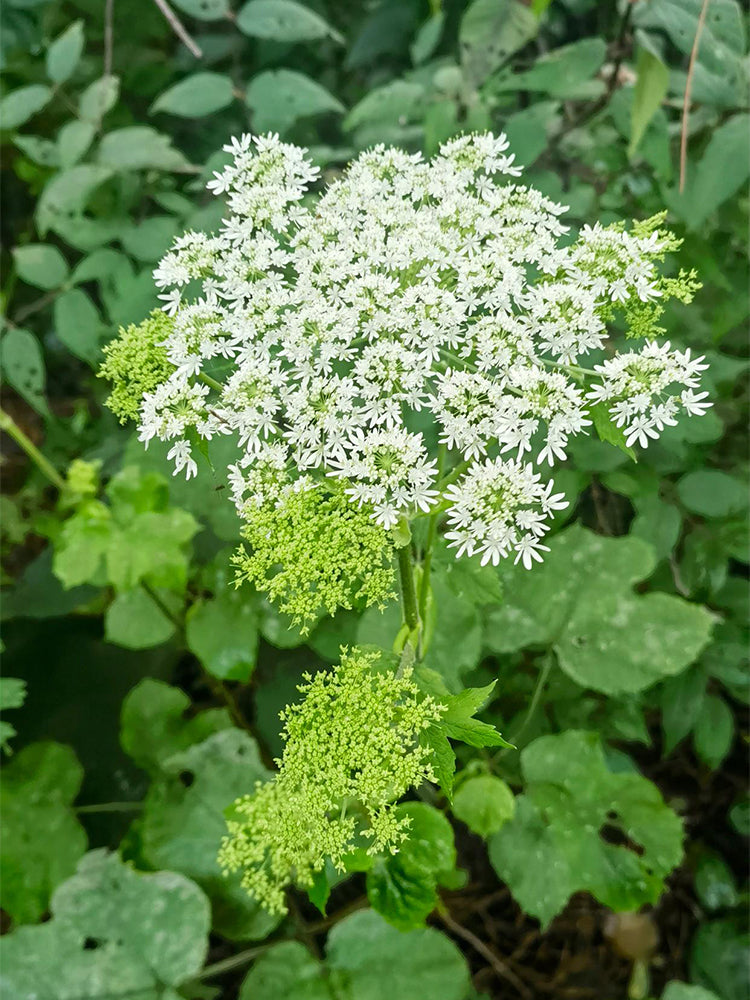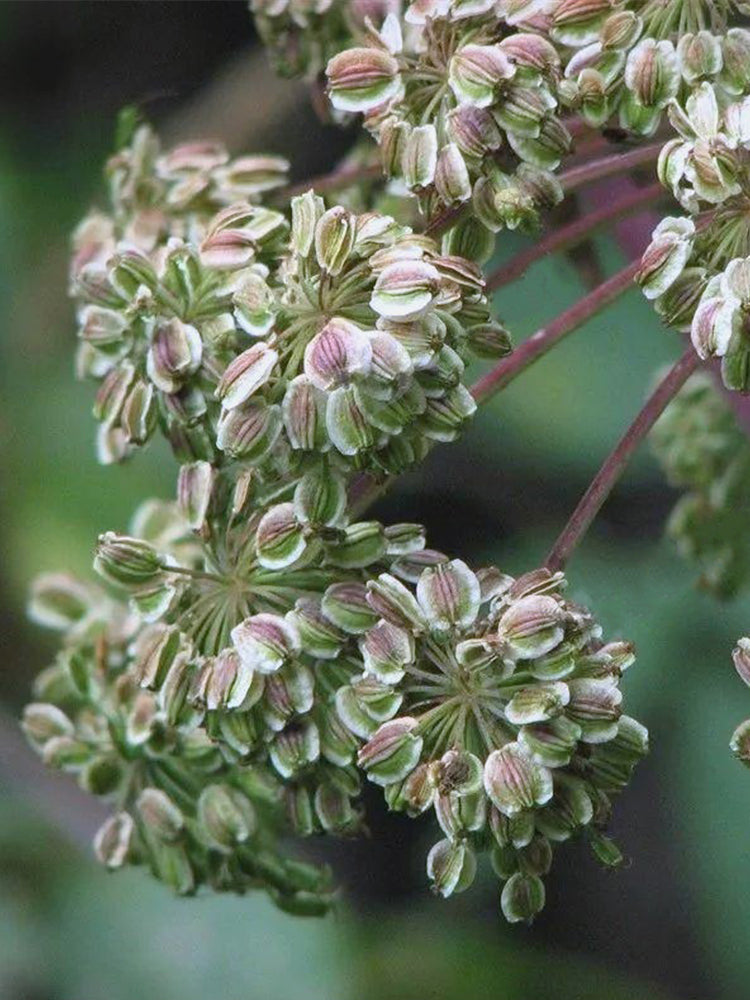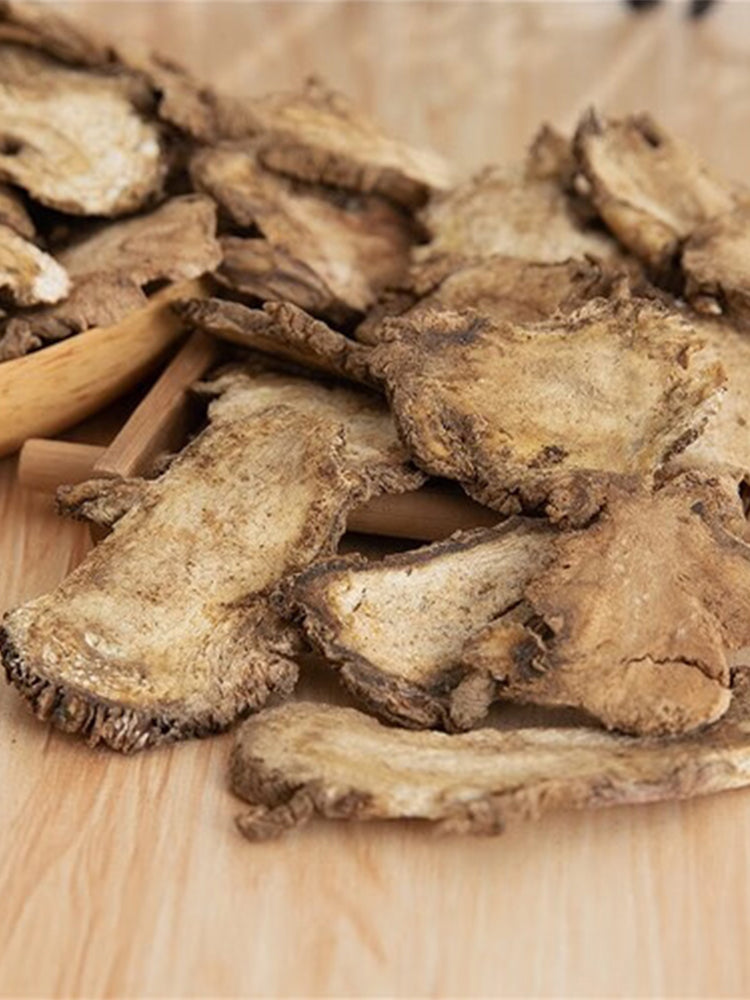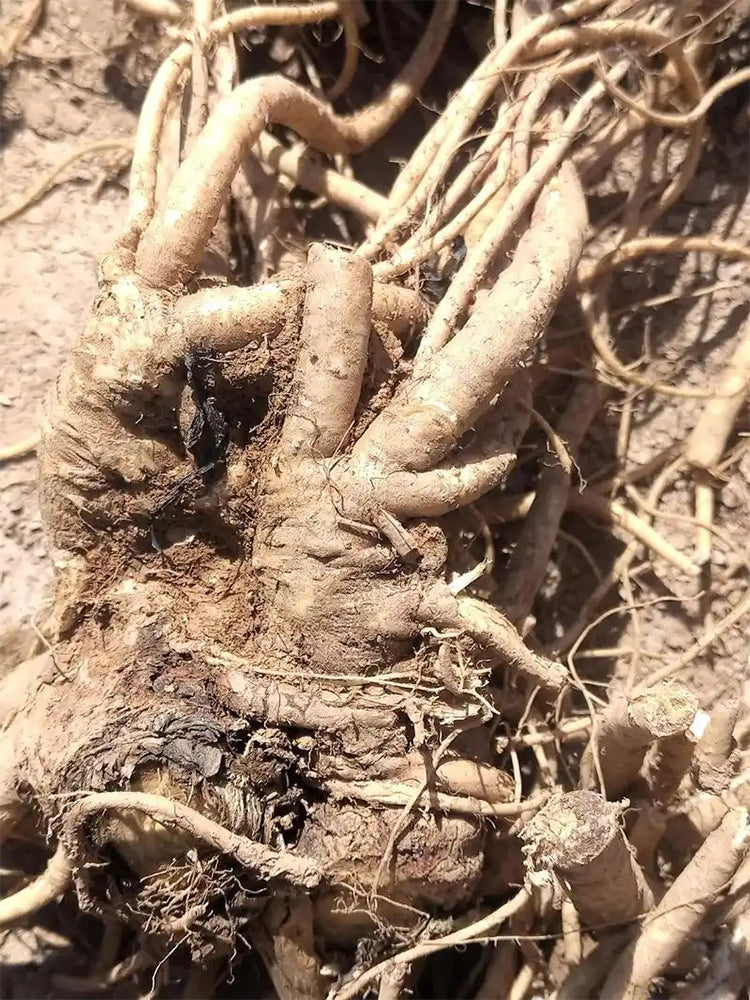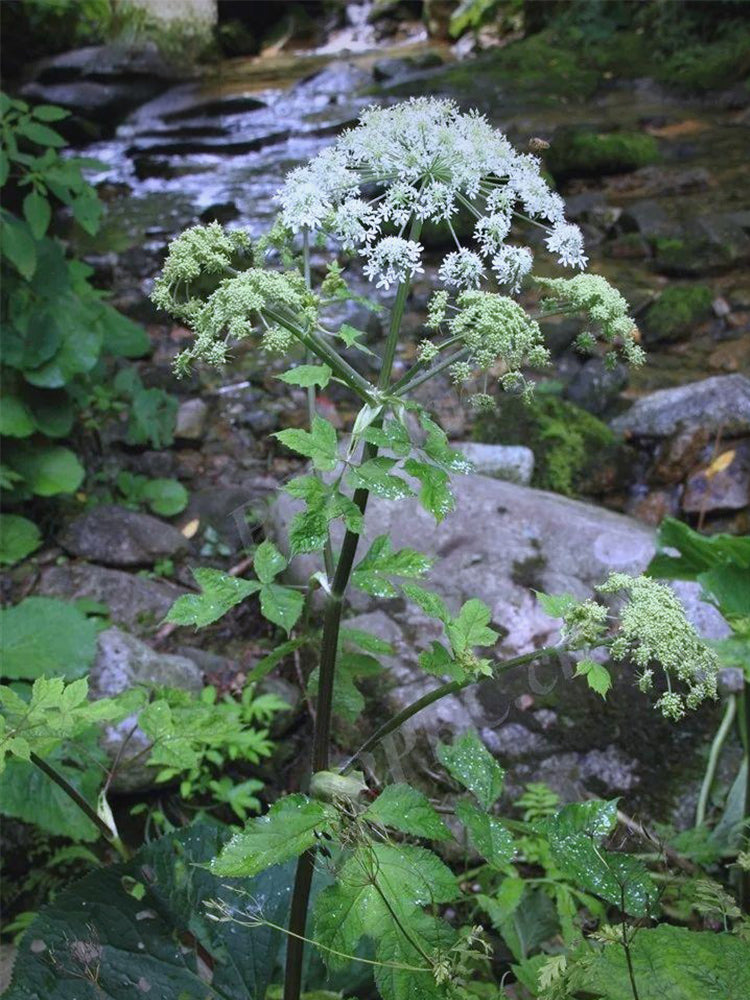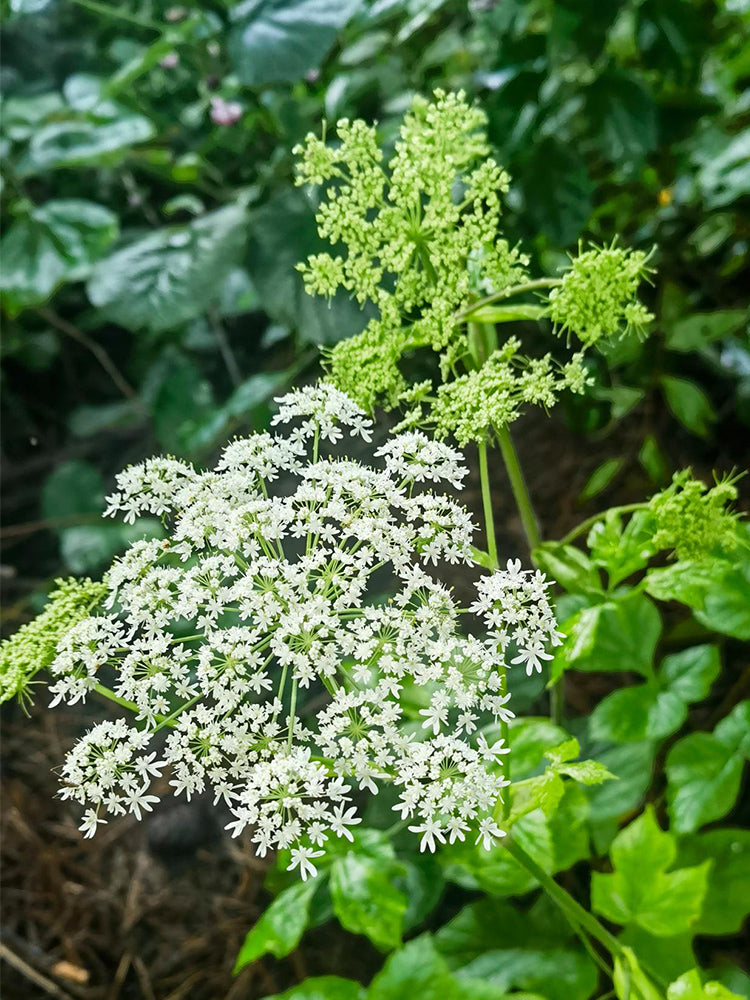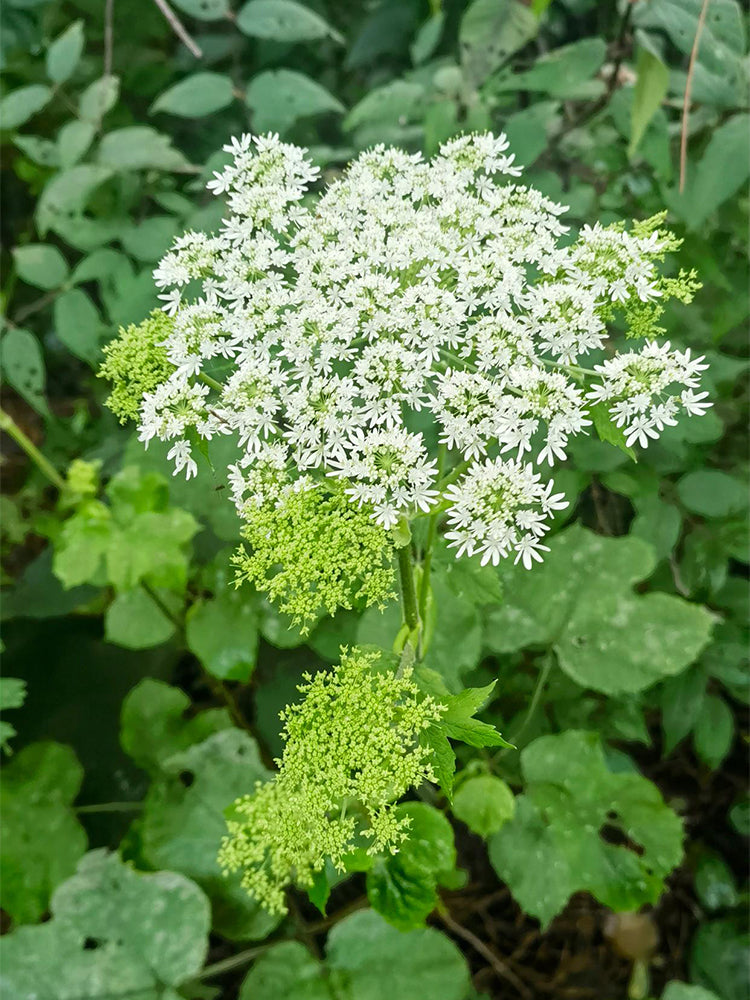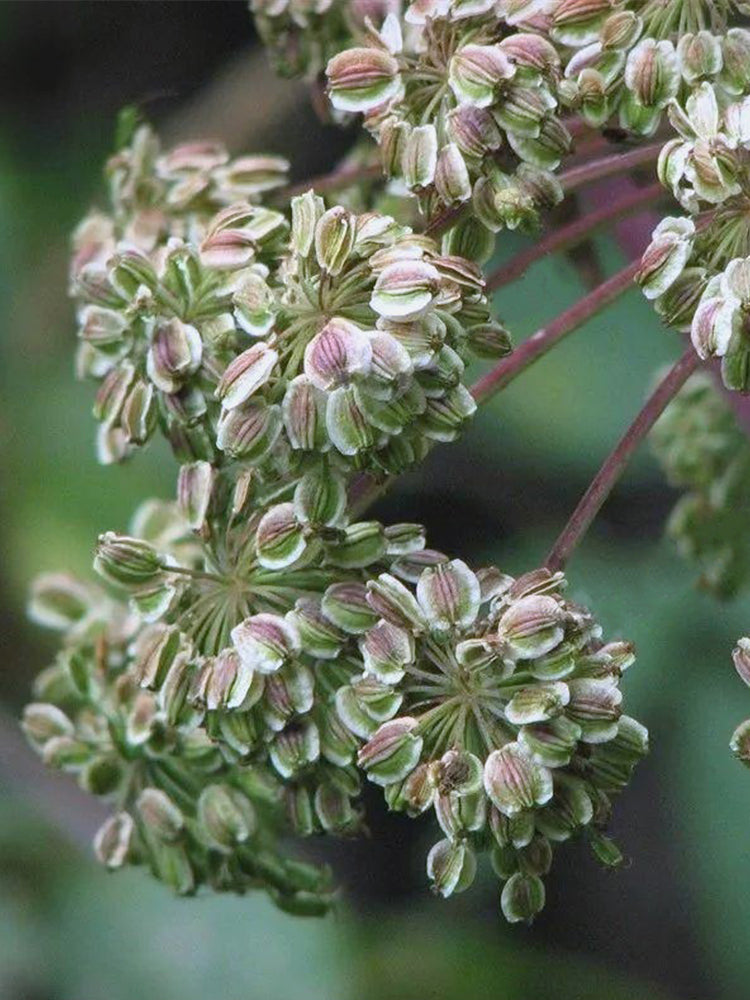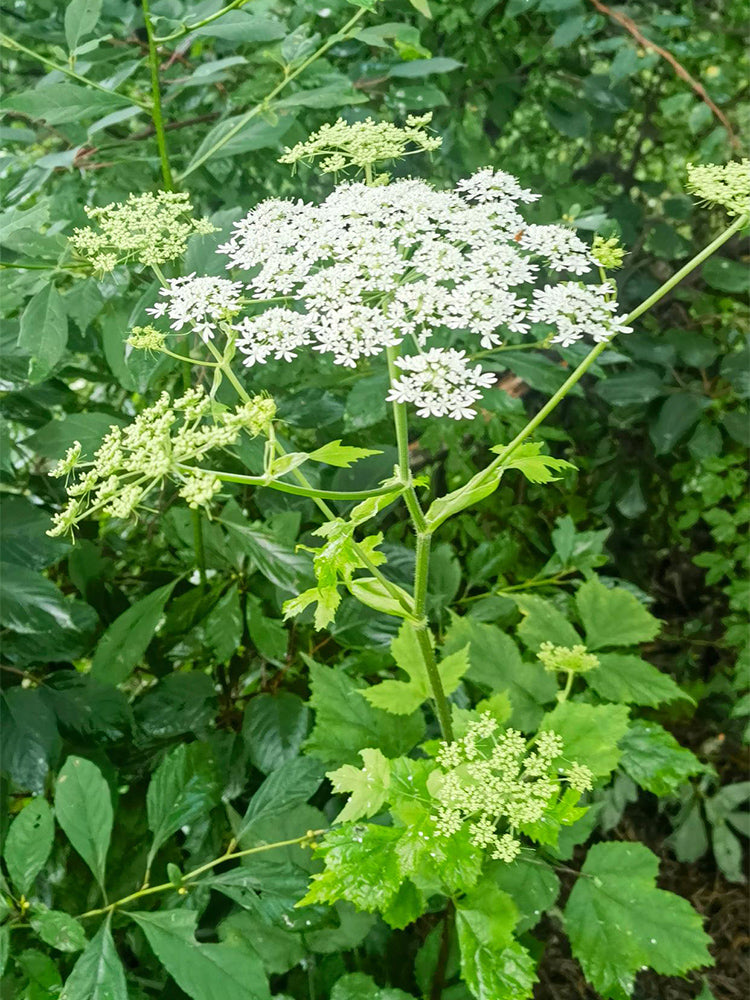BELLFARM
Hemsley's Hogweed (Heracleum hemsleyanum Diels)
Sale
Sold out
Regular price
$2.99 USD
Regular price
$4.99 USD
Sale price
$2.99 USD
Unit price
per
Couldn't load pickup availability
-
5-14 Days delivery.
-
Ship out within 24 hours.
Variety Characteristics:
- Hemsley's Hogweed (Heracleum hemsleyanum Diels) is a perennial herbaceous plant of the Apiaceae family and the genus Heracleum. It can reach up to 1.5 meters in height, with a conical, pale yellow root and sparsely pubescent stems. Its basal and lower stem leaves are 1-2 pinnate, broad ovate or ovate in shape. The plant produces slender umbels with thin pedicels; the calyx teeth are inconspicuous, and the petals are white and dimorphic. The fruit has filiform dorsal and median ribs and winged lateral ribs. Its flowering period is from May to July, and its fruiting period is from August to September.
- This plant grows predominantly in damp, shaded areas within thickets on wild mountain slopes. It prefers cool, moist climates and exhibits strong cold tolerance. For cultivation, deep soil layers rich in humus, such as black ash loam or yellow sandy soil, are ideal. It is not suitable for planting in shallow, waterlogged, or clay soils.
- The herb is characterized by a sweet taste and slightly warm nature, and it is non-toxic. It possesses medicinal properties such as dispelling wind-dampness, alleviating cold, and relieving pain. It is commonly used to treat symptoms including rheumatic arthralgia, lower back and knee pain, headaches, and toothaches. With its mild flavor, it is suitable for being vinegar-pickled, prepared as a chilled miso-based side dish, or tossed with dressing to make a salad. Additionally, the outer skin can be cooked in a kinpira-style dish with sesame, and the shoot tips can be made into tempura to reduce astringency. When used in soups or miso soup, it imparts a distinctive aroma and texture.
- Hemsley's Hogweed (Heracleum hemsleyanum Diels) is a perennial herbaceous plant of the Apiaceae family and the genus Heracleum. It can reach up to 1.5 meters in height, with a conical, pale yellow root and sparsely pubescent stems. Its basal and lower stem leaves are 1-2 pinnate, broad ovate or ovate in shape. The plant produces slender umbels with thin pedicels; the calyx teeth are inconspicuous, and the petals are white and dimorphic. The fruit has filiform dorsal and median ribs and winged lateral ribs. Its flowering period is from May to July, and its fruiting period is from August to September.
- This plant grows predominantly in damp, shaded areas within thickets on wild mountain slopes. It prefers cool, moist climates and exhibits strong cold tolerance. For cultivation, deep soil layers rich in humus, such as black ash loam or yellow sandy soil, are ideal. It is not suitable for planting in shallow, waterlogged, or clay soils.
- The herb is characterized by a sweet taste and slightly warm nature, and it is non-toxic. It possesses medicinal properties such as dispelling wind-dampness, alleviating cold, and relieving pain. It is commonly used to treat symptoms including rheumatic arthralgia, lower back and knee pain, headaches, and toothaches. With its mild flavor, it is suitable for being vinegar-pickled, prepared as a chilled miso-based side dish, or tossed with dressing to make a salad. Additionally, the outer skin can be cooked in a kinpira-style dish with sesame, and the shoot tips can be made into tempura to reduce astringency. When used in soups or miso soup, it imparts a distinctive aroma and texture.
